7. Diversity and Inclusion in Modelling : Changing Consumer Preferences
In the world of fashion and advertising, diversity and inclusion have gained great importance in recent years. Consumers now pay attention not only to the quality of the product, but also to the brand’s values, ethical stance and how representative it is of different segments of society. Especially with the influence of social media, consumers show more interest in brands that support diversity and this creates a new dynamic in the fashion industry. In recent years, diversity and inclusion have become central themes in the fashion industry. As consumers grow increasingly conscious of the values behind the brands they support, issues like representation, equality, and social justice have emerged as key factors influencing purchasing behavior. This shift is not just about being socially aware, but also about creating a deeper connection with diverse audiences who seek brands that resonate with their own identities. With the proliferation of social media and digital platforms, consumers today are more empowered than ever before. The rise of online communities and influencers has made it easier for people to voice their opinions and demand more from the brands they interact with. Brands that align with progressive social movements, demonstrate inclusivity, and actively support diversity often experience greater consumer loyalty. This trend is particularly evident among younger generations, who are more inclined to support companies with a strong ethical stance.
The Rise of Body Positivity, Size Inclusivity, and Representation in Fashion
For many years, the fashion world has idealized thin and “perfect” bodies. In recent years, however, this perception has been rapidly changing thanks to the body positivity and body inclusivity movements. Consumers now want to see models who realistically represent themselves, and brands are embracing a wider range of sizes in their campaigns to respond to this demand. For decades, the fashion industry has been largely dominated by narrow and unrealistic beauty standards, where thinness and “perfection” were often idealized as the benchmarks of attractiveness. This idealized image was reinforced by fashion magazines, advertising campaigns, and runway shows that primarily featured models with similar body types—tall, slender, and seemingly flawless. However, over the past decade, a paradigm shift has occurred, driven by the rise of body positivity, size inclusivity, and greater demand for authentic representation.
This movement is a reaction to years of exclusion and has gained significant momentum thanks to social media, which has allowed diverse voices to be heard and has empowered individuals to challenge long-standing beauty standards. Body positivity advocates for the acceptance of all body types, promoting the idea that beauty comes in all shapes, sizes, and forms. This shift is redefining what is considered beautiful and pushing for more inclusive representation in the fashion world. Consumers are no longer just interested in seeing unattainable ideals in fashion campaigns. Instead, they are increasingly demanding authenticity and diversity in the models that represent fashion brands. This has prompted brands to rethink their marketing strategies and approach to model selection. Modern shoppers, particularly among younger generations, value brands that reflect their lived realities and are more likely to engage with those that present a diverse and inclusive image. The trend toward size inclusivity is now a major driving force behind consumer decision-making, with many customers favoring companies that promote models of various sizes, shapes, and body types.
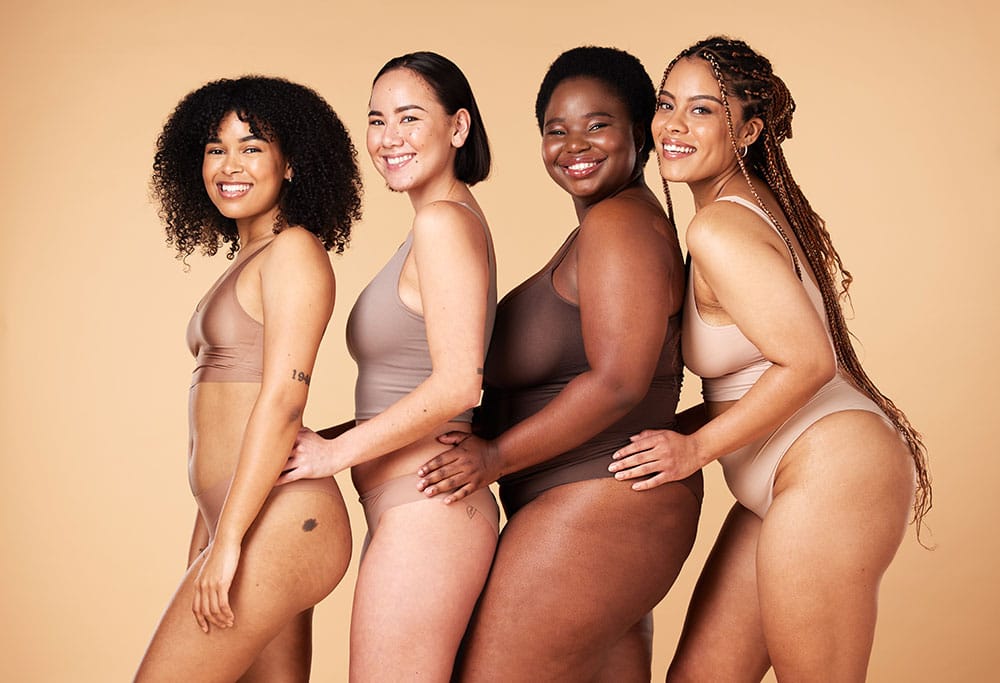
What is Body Positivity?
Body positivity is a social movement that encourages individuals to accept and love their bodies as they are. This movement, which gained momentum on social media in the early 2010s, questions beauty standards and emphasizes that every body type is valuable. Body positivity is a powerful social movement that encourages individuals to embrace and appreciate their bodies, regardless of shape, size, or appearance. Rooted in the belief that all bodies are valuable and worthy of respect, body positivity challenges society’s narrow beauty standards, which have often marginalized people who do not fit into the stereotypical image of beauty. This movement, which gained significant momentum in the early 2010s thanks to the influence of social media, advocates for self-love, acceptance, and diversity in how bodies are viewed and represented in the media.
The body positivity movement’s core message is that beauty and worth are not determined by body size, weight, or physical appearance. Instead, it emphasizes that every individual, no matter their shape, size, or form, deserves to feel confident, proud, and celebrated. The movement not only encourages self-acceptance but also challenges harmful beauty ideals that have been perpetuated by the media, advertising, and the fashion industry for decades.
Main Goals of the Body Positivity Movement:
- Ending discrimination against different body types: A key goal of the body positivity movement is to eliminate the stigma, shame, and discrimination that people of various body types often face. Whether in fashion, media, or everyday life, the movement aims to ensure that all bodies—whether plus-size, petite, or in-between—are treated with dignity and respect. It also aims to address weight-based discrimination and advocate for equal opportunities and representation for people of all sizes.
- Challenging beauty standards in the media: The movement critically questions the one-dimensional portrayal of beauty that has dominated the media for so long. Traditional beauty standards in advertising, fashion, and entertainment often exclude individuals who do not fit a specific mold, reinforcing unrealistic ideals. Body positivity seeks to broaden the definition of beauty to include diverse bodies, emphasizing that beauty comes in many forms, and that the media should reflect this diversity. The push for diversity is reflected in the increasing presence of models and celebrities of various sizes, ethnicities, and backgrounds in mainstream fashion and advertising.
- Promoting acceptance across all aspects of identity: The movement advocates for the acceptance of bodies regardless of age, weight, gender, ethnicity, or physical differences. Body positivity aims to make spaces such as fashion, fitness, and healthcare more inclusive of all individuals, regardless of how closely they align with conventional beauty standards. This inclusivity extends to mental health, recognizing that body image issues often intersect with self-esteem, mental health, and physical health challenges.
For example, Ashley Graham became one of the pioneers of the body positivity movement as a plus-size model. In 2016, she revolutionized the industry by appearing on the cover of Sports Illustrated magazine.
What is Body Inclusivity?
Body inclusivity is an approach that advocates the representation of every body in the fashion world. While body positivity emphasizes the self-acceptance of individuals, body inclusivity aims for brands to offer products that cover all bodies. Body inclusivity is a concept that extends beyond the self-acceptance promoted by body positivity. It focuses on ensuring that every body type is not only accepted but actively represented in the fashion industry. This inclusivity is about making sure that people of all shapes and sizes feel seen and valued in the fashion world, both through product offerings and marketing representation. While body positivity encourages individuals to love their bodies, body inclusivity ensures that fashion brands and industries provide clothes, styles, and campaigns that cater to diverse body types.
The shift towards body inclusivity has been a response to the historical lack of representation of plus-size, tall, petite, and differently-abled individuals in mainstream fashion. As consumers continue to demand more representation, brands are stepping up to embrace inclusivity as a core element of their business practices. This change is not just about adding a few plus-size models to a campaign but about fundamentally rethinking fashion’s approach to size diversity and ensuring that all people, regardless of body shape, have access to stylish and well-fitting clothing.
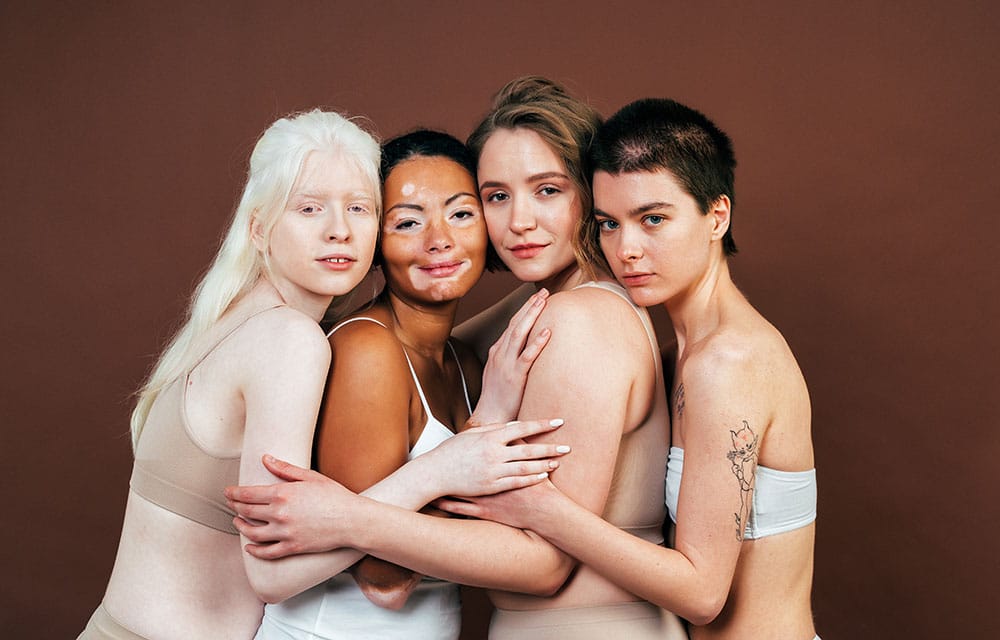
Characteristics of the Inclusive Fashion Movement:
- Designing clothes for different body sizes: Body inclusivity means that fashion brands design clothing that fits a wide range of body shapes and sizes. Historically, fashion often limited its designs to smaller sizes, forcing those who fell outside of this narrow range to either settle for ill-fitting clothes or seek options from a very limited selection. The inclusive fashion movement advocates for a broader range of sizes, ensuring that clothes not only look good but are also comfortable and flattering for everyone. It also involves tailoring designs that work well for various proportions, such as different body heights, waist-to-hip ratios, and overall shapes.
- Using various body types in campaigns and on the catwalks: The inclusion of models of all body types in advertising campaigns, runway shows, and brand imagery is a crucial aspect of body inclusivity. Instead of relying solely on tall, slim models to represent their brand, fashion companies now feature models who represent a range of sizes, ethnicities, ages, and genders. This ensures that people of different body types can relate to the fashion being promoted and see themselves represented. The visibility of diverse body types helps normalize a broader definition of beauty and reinforces the idea that fashion is for everyone.
- Expanding the product range from XS to 5XL: Body inclusivity also involves expanding the size range of clothing to ensure that people of all body shapes have access to fashionable items. Many brands are now offering sizes from XS to 5XL, or even larger, to ensure that people of varying body sizes can find clothing that fits well and suits their personal style. This size expansion is a direct response to the demand for more inclusive sizing, and it acknowledges that everyone, regardless of size, deserves to feel stylish and confident.
For example, Savage X Fenty (Rihanna’s brand) pioneered an inclusive approach in the fashion world by using models representing all body types in their underwear collections.
The Rise of Representation in Fashion: Why Body Diversity Matters
Representation in fashion means that every individual can see themselves on the catwalk, in magazines or in advertisements. When consumers see models that look like them, they form a stronger bond and their trust in the brand increases. Representation in fashion is about showcasing diversity in all its forms, ensuring that people of different body sizes, shapes, ethnicities, and backgrounds are visible on the catwalk, in advertisements, and within campaigns. When fashion brands feature models that reflect the reality of their audience, they not only enhance the connection with consumers but also contribute to changing societal standards and perceptions of beauty. The rise of body diversity in fashion represents a broader cultural shift towards inclusivity, empowering individuals by giving them visibility and validation in the media.
The Importance of Representation
Positive Impact on Body Perception in Younger Generations: Representation matters greatly for younger generations, especially in terms of body image. The exposure to diverse body types, as seen in fashion campaigns or on social media, has a direct influence on how young people perceive their own bodies. When youth are exposed to a broader spectrum of body types—beyond the slim, often unattainable ideal—they are more likely to accept their natural bodies and appreciate diversity. This, in turn, can foster better mental health and a healthier body image, reducing the pressures of conforming to unrealistic beauty standards. For example, campaigns that embrace stretch marks, cellulite, and curves give the message that beauty is not confined to one type, making it easier for young people to develop a positive relationship with their own bodies.
Enabling Brands to Reach Larger Audiences: In the past, many brands narrowly focused their marketing efforts on a specific demographic—typically individuals who adhered to conventional beauty standards. However, in today’s climate, there is a growing recognition that brands can and should cater to a wider consumer base. By embracing body diversity and featuring models who represent a broader range of sizes, brands not only increase their appeal but also expand their reach. Representation means that a variety of consumer needs are met, ensuring that everyone feels included and valued. Brands that feature diversity in their campaigns are more likely to capture the attention of global audiences, from different regions, ages, and backgrounds, all of whom seek to see themselves reflected in the brands they support.

Increases Organic Interactions on Social Media: One of the most powerful effects of body diversity in fashion is the organic engagement it generates on social media platforms. Social media has become a primary space where brands build relationships with consumers, and representation plays a key role in driving engagement. Consumers are more likely to share, comment, and engage with campaigns and brands that align with their values of inclusivity and diversity. When consumers see models of all body types, ethnicities, and abilities in a brand’s advertisements, they feel a sense of connection, which leads to positive social media interactions. Hashtags like #BodyPositivity and #RepresentationMatters trend because they resonate deeply with individuals who feel excluded or marginalized. Brands that make an effort to include diverse representation on their social platforms often see increased engagement, shares, and mentions, helping to further amplify the message of inclusivity.
For example; In the #AerieReal campaign, the Aerie brand stopped using retouching in photos and showed natural body lines. This step won the trust of consumers and increased the brand’s sales by 20%.
How Diverse Models Attract a Broader Audience and Influence Brand Loyalty
In the world of fashion and advertising, the use of different models has become a strategic marketing tool that goes beyond just showing diversity. Consumers form a stronger bond with brands when they see faces and stories that represent them. This connection increases brand loyalty and offers the opportunity to reach large audiences. Consumers are becoming increasingly diverse and the use of uniform models in the fashion industry is no longer enough. Different models represent different segments of society, helping the brand to connect with a wider audience. In today’s fashion and advertising landscape, the inclusion of diverse models is not just a trend but a strategic marketing move. Diverse representation in campaigns has become a key factor in how brands connect with consumers, build loyalty, and expand their reach. Consumers, particularly younger generations, increasingly seek brands that reflect the diversity of the world around them. When a brand uses a variety of models—representing different body types, ethnicities, ages, and more—it resonates with a broader audience, making the brand feel more authentic and relatable.
1. Why Diverse Models Matter
Representation in fashion goes beyond aesthetics—it shapes cultural narratives, influences self-perception, and fosters inclusivity. Featuring diverse models in terms of ethnicity, body size, age, gender identity, and ability helps challenge outdated beauty standards and makes fashion more accessible to a wider audience. Consumers are more likely to connect with brands that reflect real-world diversity, leading to stronger brand loyalty and broader market appeal. By embracing inclusivity, the fashion industry not only promotes social progress but also aligns with the evolving expectations of modern consumers who demand authenticity and representation.
- Stronger consumer connections: Consumers feel a deeper connection to brands that use models who reflect their own identities and experiences. When people see individuals like themselves in advertising, they are more likely to trust the brand, feeling that it understands and values them. This connection creates a sense of loyalty, as consumers are more inclined to repeatedly support brands that make them feel seen and heard.
- Expanding brand reach: As consumers become more diverse, brands that only showcase a narrow set of models are at risk of alienating a significant portion of their audience. Diverse models, on the other hand, allow brands to appeal to different segments of society, from various ethnic backgrounds, body types, and genders to different age groups and abilities. This expands the potential audience and makes the brand inclusive of all consumers, whether they are men, women, or non-binary individuals, young or old, or from various racial or cultural backgrounds. This broadens the appeal and increases the likelihood of attracting a diverse customer base.
- Fostering brand loyalty: When consumers feel represented in advertisements, they develop a stronger sense of loyalty toward a brand. A diverse and inclusive brand shows that it values authenticity, and consumers reward this authenticity with their loyalty. Moreover, consumers who feel connected to a brand on a personal level are more likely to spread positive word-of-mouth, share their experiences with their peers, and engage with the brand on social media platforms, all of which contribute to long-term brand success.
- Driving positive brand perception: Featuring diverse models sends a powerful message that the brand is progressive, inclusive, and committed to challenging traditional beauty standards. This positive perception resonates not only with underrepresented communities but also with socially conscious consumers who prioritize ethics and inclusivity when making purchasing decisions. Brands that embrace diversity are seen as more forward-thinking and aligned with modern values, which can elevate their status and credibility in the eyes of the public.
Types of Diversity in Fashion Campaigns
Modern fashion campaigns are increasingly embracing diversity, reflecting a broader spectrum of identities and experiences. Diversity in fashion extends beyond ethnicity to include body size, age, gender identity, disability, and cultural backgrounds. Body positivity campaigns challenge unrealistic beauty standards, while age-inclusive marketing highlights style beyond youth-centric trends. Gender-fluid and adaptive fashion address the needs of non-binary individuals and people with disabilities, ensuring fashion is accessible to all. By incorporating diverse representation, brands not only foster inclusivity but also resonate with a wider audience, making fashion more reflective of the world we live in.
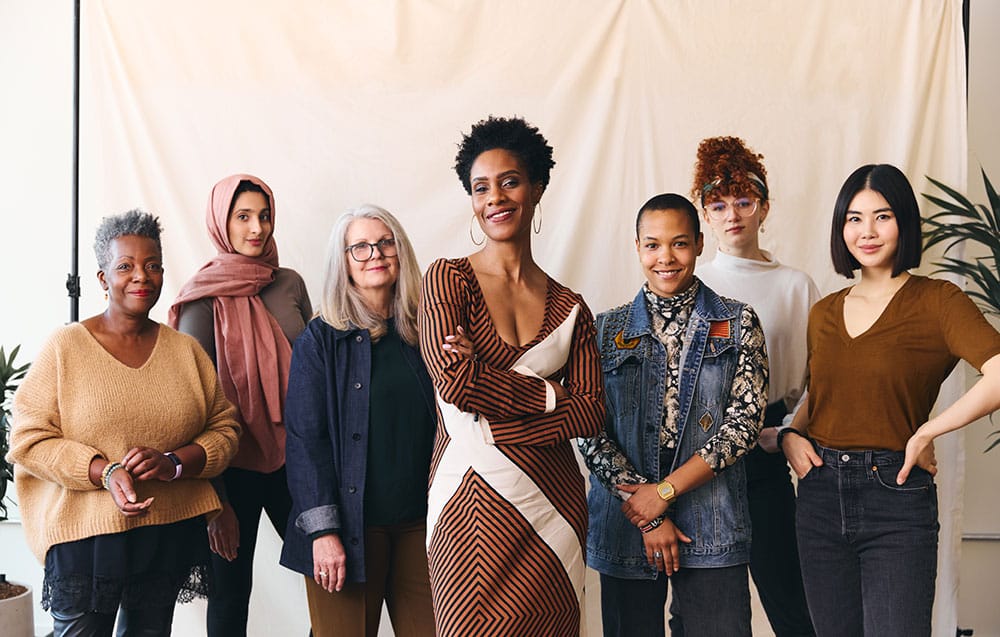
- Ethnic and cultural diversity: Representation of different racial and ethnic backgrounds is one of the most visible aspects of diversity in fashion campaigns. Featuring models from various cultural backgrounds helps brands reach a global audience and showcase inclusivity. Brands that embrace ethnic diversity are perceived as culturally aware and open-minded, which appeals to consumers seeking global representation. For example, Estée Lauder has worked with models of various ethnicities, such as Liya Kebede and Shaun Ross, to communicate that beauty is not restricted to one ethnic group.
- Size diversity: Size inclusivity has become an essential aspect of modern fashion. The use of plus-size models, petite models, and athletic body types allows brands to reach a wide range of consumers who may not feel represented by traditional runway standards. Brands like Aerie, Savage X Fenty, and ASOS have gained significant attention by using models of all sizes in their campaigns, showing that beauty and fashion should be available to everyone, regardless of body shape.
- Age diversity: Age representation is a crucial yet often overlooked aspect of diversity in fashion. While younger models dominate many fashion campaigns, showcasing models from different age groups helps brands reach consumers across generations. Older models can bring a sense of timeless elegance, experience, and wisdom to a brand, making it more relatable to a mature audience. For example, L’Oréal has used models like Helen Mirren and Jane Fonda in their advertisements, demonstrating that beauty transcends age and that consumers of all ages can embrace their products.
- Gender diversity: Gender representation has become increasingly important in fashion, especially with the rise of genderless fashion and LGBTQ+ visibility. By including models who represent a wide range of gender identities and expressions, brands are able to reach and resonate with more gender-fluid and non-binary consumers. Fashion brands like Gucci and Balenciaga have featured gender non-conforming models in their campaigns, sending a message of inclusivity for all gender identities. This approach has a positive impact on consumers who feel that their gender identity is not confined to binary norms.
- Disability representation: Another crucial form of diversity is the inclusion of models with disabilities. Disability representation in fashion is essential for promoting inclusivity and ensuring that all individuals, regardless of their physical abilities, see themselves reflected in fashion and advertising. Brands such as Fenty Beauty and Tommy Hilfiger have been at the forefront of this movement, featuring models with various physical disabilities, such as those with prosthetics, wheelchairs, or visible impairments. This not only makes fashion more accessible but also empowers individuals with disabilities to feel that they too can be part of the fashion world.
For example, the Savage X Fenty fashion shows have generated global interest, using models of all sizes, age groups and ethnicities.
The demand for Authenticity in Modern Advertising
Advertising has undergone a radical transformation with the impact of the digital age. Consumers now value not only the product or service, but also the authenticity, sincerity and unique experience offered by the brand. As the concept of “authenticity” has become a central element in advertising strategies, brands are trying to make their content more personal, honest and realistic to meet this demand. Authenticity in advertising means conveying sincere and trustworthy messages to consumers while maintaining a brand’s unique identity. Consumers are increasingly sensitive to fake or copied content and expect brands to produce content that reflects their true values. In today’s digital age, consumers have become more discerning and informed. With the rise of social media and user-generated content, advertising has shifted from being a one-way communication channel to an interactive, multi-dimensional experience. As a result, authenticity has emerged as a crucial element of modern advertising. Consumers no longer want just to see polished, idealized portrayals of products—they want brands to be real, honest, and genuine. In this new era, authenticity is not just a marketing buzzword; it’s a key factor in building trust and connecting with consumers on a deeper level.
What Does Authenticity Mean in Advertising?
Authenticity in advertising refers to the ability of a brand to convey its messages sincerely, transparently, and with honesty, while remaining true to its core values and identity. It’s about showing the real people behind the brand, sharing genuine stories, and presenting products or services in a way that reflects the brand’s true essence. This requires going beyond staged or overly-curated content and instead focusing on making ads feel more relatable, personal, and transparent.
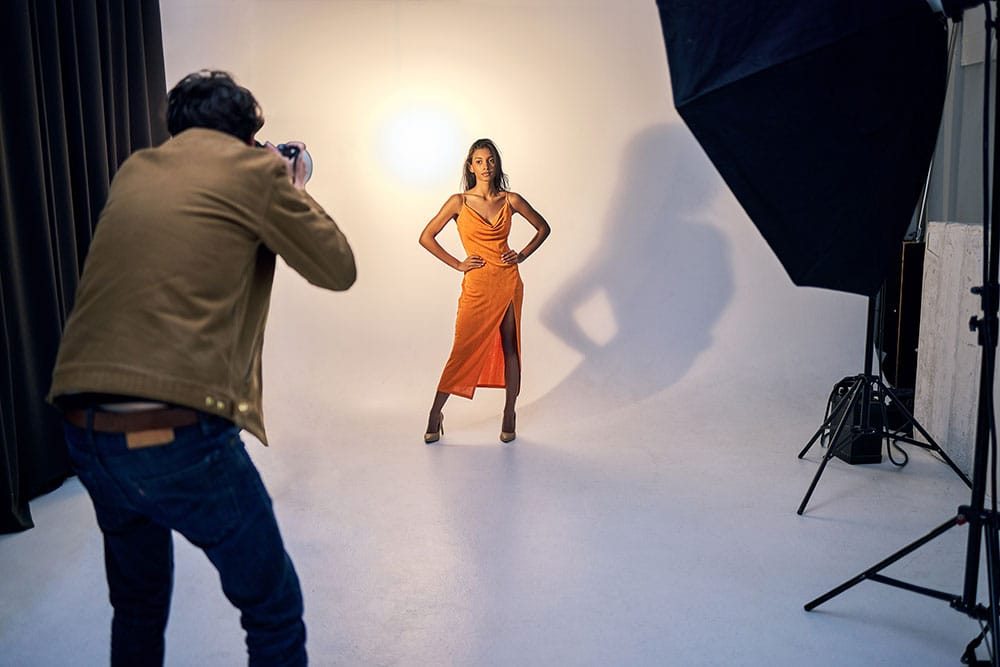
Why Authenticity Matters?
In an era of social media and digital marketing, consumers are more discerning than ever, valuing authenticity over traditional advertising tactics. Authenticity in fashion branding fosters trust, builds genuine connections, and enhances brand loyalty. Consumers are drawn to brands that embrace transparency, inclusivity, and real storytelling rather than overly polished, unrealistic portrayals. Whether through unfiltered content, diverse representation, or ethical business practices, authenticity resonates with modern audiences, influencing purchasing decisions and long-term brand success. In a competitive market, staying true to brand values and engaging authentically with consumers is key to meaningful and lasting impact.
- Building trust: Trust is the foundation of any successful brand-consumer relationship. Today’s consumers are well-versed in digital content and can easily detect disingenuous or overly promotional messages. Brands that embrace authenticity are perceived as more trustworthy. When brands show their true selves—acknowledge mistakes, embrace imperfections, or openly discuss their values—they build stronger emotional connections with their audience. For example, brands like Patagonia have built a loyal following by staying true to their environmental and ethical values, even when it means challenging industry norms.
- Skepticism toward traditional advertising: Traditional advertising, which often focuses on exaggerated claims and idealized imagery, has led to increased consumer skepticism. Over time, consumers have become better at tuning out or blocking ads that feel too staged or manipulative. This shift has pushed brands to adopt more authentic approaches to marketing that feel real and reflect genuine human experiences. User-generated content, such as customer reviews or behind-the-scenes looks at production, has gained popularity because it feels more trustworthy and less scripted.
- Connecting on an emotional level: Modern consumers, particularly younger generations, crave emotional connection and personal relevance in the brands they support. Authentic advertising helps foster these emotional bonds. When a brand shares real, heartfelt stories or showcases real people—such as customers or employees—it creates a sense of belonging and community. For instance, brands like Nike and Dove have found success by telling stories about empowerment, self-love, and overcoming challenges, which resonate deeply with their audiences.
- The rise of social media influencers: The success of influencer marketing underscores the demand for authenticity in advertising. Influencers are often seen as more relatable and genuine than traditional celebrities because they often share more personal, behind-the-scenes content with their audiences. Consumers trust influencers who seem authentic, as their content feels less like a commercial and more like a conversation between friends. Brands leveraging influencer partnerships aim to create ads that feel organic, unscripted, and in line with the influencer’s established persona.
- Consumer-Driven Expectations: Today’s consumers demand transparency and honesty from the brands they support. With access to vast amounts of information online, consumers can easily research a brand’s history, ethics, values, and supply chains. If a brand’s claims don’t align with its actions, consumers are quick to call them out. Authenticity helps ensure that a brand’s marketing aligns with its actual practices, whether that’s in terms of product sourcing, environmental impact, or labor conditions. Brands that are transparent about their practices, admit flaws, and strive to improve will build stronger, more loyal customer bases. For instance, Everlane has gained popularity by focusing on transparency in its pricing and manufacturing processes.
- Consumer Empowerment and the Power of Social Media: Social media platforms have democratized the advertising space, giving consumers a louder voice than ever before. They are no longer passive recipients of advertising messages but active participants who can shape brand reputations in real-time. Brands are under increasing pressure to be authentic as consumers can easily call out companies for hypocrisy, dishonesty, or exploitation. For example, #MeToo and Black Lives Matter have forced brands to confront issues of equality, diversity, and social justice, challenging them to align their marketing with their actions.
- Influence of the “Real” vs. the “Ideal”: Social media has also led to a backlash against the idealized beauty standards and perfection often promoted by the fashion and beauty industries. Consumers increasingly reject unrealistic portrayals and prefer more inclusive, genuine representations of beauty and success. Brands that embrace real models, showcase a variety of body types, skin tones, ages, and abilities, and show that beauty comes in many forms, are being embraced by consumers who feel their values align with these brands.
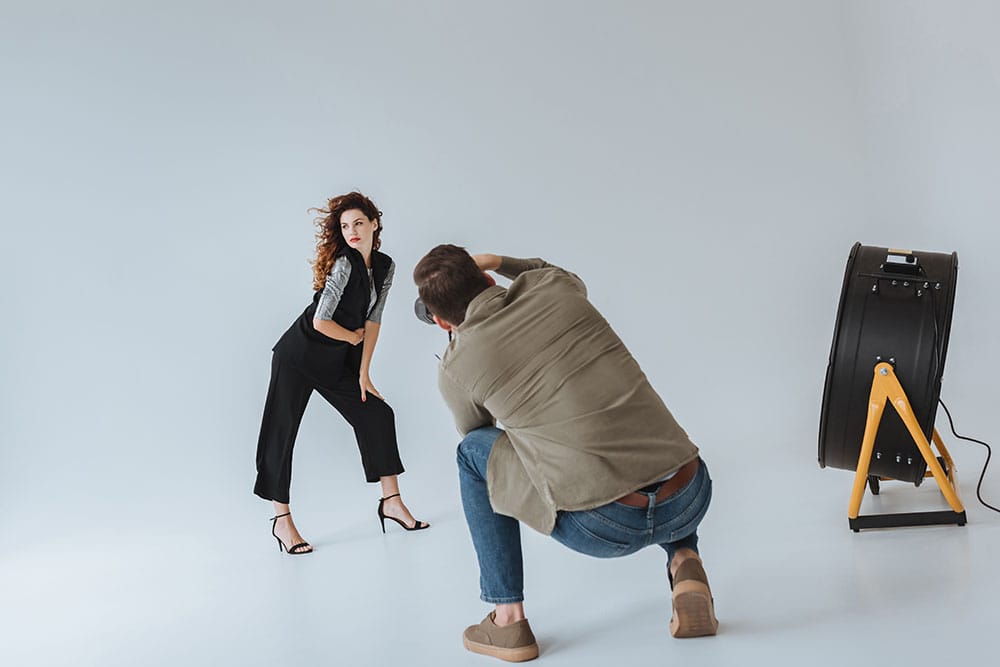
Case Studies: Brands that Have Successfully Embraced Diversity and Reaped Commercial Benefits
In today’s fashion and retail landscape, diversity is more than just a social responsibility—it’s a powerful business strategy. Brands that prioritize inclusive representation in their campaigns, runway shows, and product offerings have not only fostered deeper connections with consumers but also seen measurable commercial success. From increased sales and brand loyalty to stronger global market reach, these companies demonstrate how embracing diversity leads to both cultural impact and financial growth. This section explores case studies of brands that have successfully integrated diversity and reaped the rewards of an inclusive approach.
1. Nike – Brand Loyalty through Diversity and Social Messages
In 2018, it highlighted social injustices in its “Believe in Something, Even if it Means Sacrificing Everything” campaign featuring Colin Kaepernick.
It used models from different races, physically disabled athletes and the LGBTQ+ community in its ads.
- Commercial results: Share values increased by 31% after the campaign.
- Significantly strengthened brand loyalty among young consumers.
- Authenticity strategy: Gained the trust of socially conscious consumers by taking a bold stance on social justice issues.
2. Dove (Unilever) – Strengthening Consumer Engagement with the Perception of Real Beauty
In the “Real Beauty” campaign she launched in 2004, she highlighted women of different body types, ages and skin colors. She promised not to use filters and retouching in the photos.
- Commercial results: Sales increased by 60% in 2 years.
- The brand became the industry leader in terms of credibility and sincerity among women.
- Authenticity strategy: Produced content that empowered consumers by rejecting the beauty stereotypes imposed by society.
3. Tommy Hilfiger – Reaching Consumers with Disabilities with Adaptive Collection
In 2016, she launched the Adaptive Collection for physically disabled individuals. It drew attention to inclusion in society by using disabled models in campaigns.
- Commercial results: Became one of the leading brands in the inclusive fashion segment.
- Created a loyal customer group among disabled consumers.
- Authenticity strategy: Adopted an empathetic and innovative approach by focusing on a segment of society that is often overlooked.
8. The ‘’See Now, Buy Now’’ Model and Fast Fashion
In the contemporary fashion world, consumer expectations are rapidly evolving, compelling brands to develop new strategies to keep pace. The “See Now, Buy Now” model is based on the principle of making products showcased in fashion shows or on digital platforms available for immediate purchase. This approach not only enhances customer engagement but also addresses the demand for instant gratification in shopping. By allowing consumers to buy items as soon as they see them, brands can capitalize on the excitement generated during fashion events and leverage social media to drive sales. As the market continues to shift, the adoption of such innovative strategies will be crucial for brands aiming to meet the dynamic needs of their consumers.

How High-End Runway Trends Translate into Fast Fashion within Weeks?
Innovative designs showcased at luxury fashion weeks quickly make their way into street fashion and the collections of fast fashion brands. This transformation highlights the dynamic nature of the fashion industry and the rapid pace of consumer demand. Paris, Milan, London, and New York Fashion Weeks serve as the heartbeat of the global fashion industry. Designers present their new collections, drawing attention to colors, cuts, fabrics, and themes. The designs that stand out on the runway often go viral on social media almost instantly. For example, in 2023, Valentino’s “Pink PP” collection became a sensation on social media, leading to a surge of pink-toned products in numerous fast fashion brands shortly thereafter. This phenomenon underscores the interconnectedness of high fashion and fast fashion, demonstrating how trends can propagate swiftly across different segments of the market.
1. Fast Fashion Brands’ Rapid Production Strategies
Fast fashion companies have fine-tuned their supply chains to capture and replicate luxury trends almost instantly.
- Trend Forecasting Technologies: Brands like Zara, H&M, and Shein use AI tools to analyze runway looks and social media trends. These tools track the popularity of certain colors, fabrics, and silhouettes, enabling brands to predict consumer preferences.
- Agile Manufacturing: Unlike traditional fashion cycles that require months of preparation, fast fashion brands work with flexible suppliers who can start producing new designs within days. For instance, Zara is known to deliver new collections to its stores in as little as two weeks.
- Global Sourcing: By leveraging manufacturing hubs across Asia, Latin America, and Eastern Europe, brands ensure quick and cost-efficient mass production of high-demand items.
2. Consumer Demand and Psychological Appeal
The success of runway-to-retail transitions heavily depends on consumer behavior and psychological triggers.
- Aspirational Buying: While not everyone can afford a Balenciaga or Dior piece, consumers feel connected to luxury brands by purchasing similar styles from high-street stores.
- Fast-Paced Lifestyle: With rapidly changing trends, consumers now prioritize novelty over longevity, contributing to the cycle of short-lived microtrends.
3. Global Sourcing and Decentralized Production;
- Diversified Manufacturing Hubs: Production is often outsourced to factories in Turkey, Bangladesh, Vietnam, and China, where labor and material costs are lower.
- Fast Transport Networks: Brands utilize efficient logistics systems to distribute products globally via air, sea, and land.
- Example: Shein employs a network of factories with a flexible production model, allowing the company to respond rapidly to viral fashion trends.
- Consumer Demand and Psychological Appeal: The success of runway-to-retail transitions heavily depends on consumer behavior and psychological triggers. Fast fashion brands capitalize on the following dynamics:
4. Aspirational Buying:
- Desire for Luxury Affiliation: Consumers seek to emulate the styles they see on celebrities and influencers at fashion weeks. While they may not afford a Balenciaga or Dior piece, they find satisfaction in purchasing similar designs from more accessible retailers.
- Example: The oversized Balenciaga “Le Cagole” bag became a streetwear staple after being seen on Kim Kardashian. Within weeks, similar bags flooded high-street stores.
The Influence of Instant Gratification on Purchasing Behavior
Instant gratification refers to the desire for immediate satisfaction, where an individual seeks quick responses to emotional needs or desires. This phenomenon plays a significant role, especially in today’s digital world and shopping habits. With the rise of fast fashion, online shopping, and social media, consumers are increasingly making purchasing decisions driven by the urge for instant fulfillment.
The quest for instant gratification is an innate human impulse. People prefer to obtain what they want immediately rather than waiting for something they do not desire. This behavior triggers the release of dopamine, leading to feelings of happiness. Consumers often achieve this satisfaction through shopping, particularly facilitated by social media and online shopping platforms.
Online stores promote instant gratification through user-friendly interfaces, fast payment options, and quick delivery services. Features like “Add to Cart and Buy Now” accelerate the shopping process for consumers. Platforms such as Instagram and TikTok direct users toward instant satisfaction, with popular influencers and advertisements driving rapid sales of products.
This interplay between consumer behavior and digital platforms highlights the importance of catering to the desire for immediate rewards in the modern shopping experience. In today’s fast-paced digital world, the phenomenon of instant gratification has significantly impacted consumer purchasing behaviors, especially in the fashion industry. Instant gratification refers to the human desire for quick and immediate satisfaction, and this desire plays a crucial role in shaping how, when, and why consumers make purchasing decisions.

1. The Role of Digital Technology and Social Media
The digital transformation in shopping, particularly through social media and e-commerce platforms, has heightened the desire for instant rewards. With smartphones and social media apps providing continuous access to products and promotions, consumers are presented with opportunities to make quick, impulsive purchases at any time and from anywhere. Influencers, brand advertisements, and targeted social media campaigns play an instrumental role in driving these behaviors. For instance, platforms like Instagram and TikTok integrate shopping features directly into their apps, allowing users to purchase items with a single click. This seamless integration of shopping into the content stream creates a cycle of instant gratification, as users can go from seeing a product to purchasing it in a matter of seconds.
2. Psychology of Instant Gratification and Dopamine
At the heart of instant gratification is the concept of dopamine release—the “feel-good” neurotransmitter that plays a crucial role in rewarding behaviors. When consumers make purchases based on the urge for instant gratification, their brains release dopamine, which reinforces the behavior. This feeling of satisfaction is short-lived but powerful, and it encourages consumers to repeat the behavior.
Shopping triggers this response in a way that is both emotionally satisfying and psychologically addictive. When shoppers make a purchase, particularly impulsively, they experience a rush of pleasure associated with fulfilling their desire in the moment. This instant reward creates a cycle, as people are often motivated to continue shopping to recreate that pleasurable experience, leading to repeated and frequent purchasing behavior.
The Environmental and Ethical Impact of Rapid Fashion Cycles
Fast fashion refers to the process of rapidly producing, distributing, and presenting designs to consumers. This industry typically relies on low-cost and quick production methods. However, this model has significant environmental and ethical implications. The rise of fast fashion has revolutionized the fashion industry by enabling brands to produce new styles and designs at an unprecedented speed. Fast fashion brands like Zara, H&M, Shein, and ASOS are able to create affordable clothing that quickly reflects the latest trends, leading to high sales volumes and frequent new product releases. While this has democratized fashion and made trendy clothing accessible to a wide range of consumers, it has also brought about significant environmental and ethical challenges.

1. Environmental Impacts
The rise of the “See Now, Buy Now” model and fast fashion has drastically accelerated trend cycles, leading to increased production, overconsumption, and significant environmental consequences. To meet instant consumer demand, brands often rely on mass production, which contributes to excessive water usage, carbon emissions, and textile waste. The short-lived nature of fast fashion also fuels a throwaway culture, with millions of garments ending up in landfills each year. Additionally, the reliance on synthetic fabrics and unsustainable manufacturing processes further exacerbates pollution and resource depletion. As consumers become more environmentally conscious, brands face growing pressure to adopt sustainable practices, rethink supply chains, and promote responsible consumption.
Fast fashion leads to the production and consumption of large quantities of products, making the clothing industry a significant source of waste. The garments that are produced quickly and sold at low prices often go out of style in a short period, resulting in a high turnover of clothing that frequently ends up in landfills.
Key issues:
- Waste generation: Each year, billions of tons of clothing are discarded, with much of it remaining in landfills due to being made from synthetic materials. Globally, approximately 92 million tons of textile waste are generated annually, most of which is non-recyclable and harmful to the environment.
- Water usage: Fast fashion brands consume vast amounts of water in their production processes. For instance, producing a single t-shirt requires about 2,700 liters of water—equivalent to the amount one person would drink over 2.5 years. The chemicals used for dyeing and processing garments can also pollute water sources.
- Carbon emissions: The production of clothing often relies on fossil fuels and energy-intensive processes, leading to substantial carbon emissions. The distribution of fashion products globally, especially through maritime and air transport, contributes significantly to CO2 emissions. For example, the fast fashion industry accounts for approximately 10% of global carbon emissions.
- Microplastic pollution: Synthetic fabrics such as polyester, nylon, and acrylic release microplastic particles during each wash. These microplastics eventually make their way into oceans, where they enter the food chain, posing indirect threats to human health. Marine life ingests these particles, leading to bioaccumulation and potential toxicity in larger fish, which can ultimately affect consumers.
- Chemical pollution: The dyeing process of fabrics often involves harmful chemicals that frequently end up in water sources. Textile factories, particularly in Asia, have been known to contaminate rivers with toxic substances, leading to significant environmental degradation. This pollution not only affects aquatic ecosystems but also poses health risks to nearby communities that rely on these water sources for drinking and agriculture.
- Soil pollution and degradation: The excessive use of pesticides and fertilizers in cotton production diminishes the fertility of agricultural land. Furthermore, synthetic fabrics are non-biodegradable, remaining in the soil for many years and contributing to land degradation. This persistent pollution disrupts local ecosystems and reduces the land’s ability to support future agricultural endeavors.
- Energy consumption: The textile industry is heavily reliant on fossil fuels, such as coal, for rapid production processes. The use of renewable energy sources within the sector remains alarmingly low. This dependence on non-renewable energy not only contributes to greenhouse gas emissions but also exacerbates climate change, further impacting the environment.
- Transportation and distribution emissions: Global distribution networks necessitate the transportation of products over thousands of kilometers, leading to significant greenhouse gas emissions. The carbon footprint associated with shipping and logistics in the textile industry is substantial, contributing to climate change and environmental degradation. Reducing transportation emissions is critical for making the industry more sustainable.
2. Ethical Implications
Fast fashion often relies on labor in developing countries to produce goods at low costs. This practice leads to serious issues regarding workers’ rights and conditions.
Key labor issues:
The fast fashion industry’s demand for rapid, low-cost production often results in exploitative labor practices, particularly in developing countries. Many garment workers face unsafe working conditions, extremely low wages, long hours, and a lack of job security. Factory environments can be hazardous, with poor ventilation, fire risks, and exposure to harmful chemicals. Additionally, issues such as child labor, forced labor, and the suppression of workers’ rights remain persistent problems. The pressure to keep production costs low frequently leads to violations of ethical labor standards, raising concerns about corporate responsibility and the need for greater transparency in the supply chain.
Problems:
- Poor working conditions: Workers in factories producing fast fashion items frequently endure long hours and receive wages below the minimum wage. They may work in unsafe environments with inadequate safety measures.
- Gender disparities: A significant majority of workers in the fast fashion sector are women, who often face lower wages and discrimination compared to their male counterparts. Female workers may be subjected to poorer working conditions and unequal pay.
- Lack of transparency: Many fast fashion brands do not present their supply chains transparently, making it difficult for consumers to understand the conditions under which their products are made and the ethical issues involved.
- Misleading sustainability claims: Some brands falsely advertise themselves as environmentally friendly, manipulating consumer awareness regarding sustainability. While many brands claim to offer sustainable collections, these lines often represent a very small portion of their total production.
- Child labor: In many developing countries, child labor is frequently employed to reduce costs. The lack of international oversight allows this practice to persist, depriving children of their right to education and a safe childhood. Brands must take responsibility for ensuring their supply chains are free from child labor and advocate for the rights of vulnerable populations.
- Working hours and forced labor: Workers in the textile industry often endure excessively long hours, typically ranging from 12 to 16 hours a day, without receiving overtime pay. This issue is particularly prevalent in countries like Bangladesh, India, and Cambodia, where labor laws are poorly enforced. The exploitation of workers not only affects their livelihoods but also their overall well-being.
- Psychological and physical health risks: The absence of safety measures in factories leads to a high incidence of workplace accidents. Workers are often under significant psychological pressure, with their rights to unionize and advocate for better conditions suppressed. This toxic work environment can have lasting effects on both mental and physical health, making it imperative for brands to prioritize worker safety and mental health support.
- Gender inequality: Female workers in the textile industry frequently face gender-based violence and harassment. Wage disparities, coupled with limited opportunities for education and professional development, exacerbate this inequality. Addressing gender inequality is crucial for creating a fair and just workplace where all employees can thrive.
- Supply chain opacity: Many brands avoid disclosing their supply chains, allowing unethical practices to remain hidden. This lack of transparency enables exploitation and raises questions about corporate accountability. Additionally, some companies engage in “greenwashing”—creating a façade of sustainability without implementing meaningful changes. Genuine commitment to ethical practices requires brands to be transparent about their supply chains and take concrete steps towards sustainability.
The Influence of Instant Gratification on Purchasing Behavior
In fashion marketing, brands often face the challenge of balancing exclusivity and mass accessibility. While some brands thrive on offering limited-edition products or exclusive experiences to cater to a niche market, others aim to reach a broader audience by offering affordable products. Striking the right balance between these two approaches is crucial for brands that wish to maintain their image while maximizing reach and sales.

1. The Influence of Instant Gratification on Purchasing Behavior and Exclusivity
Exclusivity refers to a brand or product’s limited, special, and elite positioning. Typically, high-quality luxury brands adopt this strategy. Exclusivity creates a sense of “elite” among consumers by offering prestige, high prices, and unique experiences. Exclusivity is a powerful marketing tool used by high-end brands to position their products as rare, special, and unattainable for the general public. The strategy of creating a sense of elite status among consumers relies on the limited availability, high quality, and high price point of the product. This sense of scarcity heightens demand, creating a luxury aura around the brand.
2. Key Elements of Exclusivity:
- Limited availability: One of the cornerstones of exclusivity is ensuring that a product or collection is available only to a select group of consumers. By limiting the quantity, a brand can heighten the desirability of the product, making it more attractive to consumers who crave rarity and uniqueness. For instance, brands like Louis Vuitton, Chanel, and Hermès often release limited-edition bags, shoes, and accessories that create a sense of urgency and exclusivity.
- High price points: Luxury brands often use pricing as a tool to reinforce exclusivity. The higher the price, the more the consumer perceives the item as valuable and scarce. Expensive items convey a sense of status and achievement. Custom-made, hand-crafted, or artisanal goods are also common in exclusivity marketing, as they often come with a premium price tag. Brands like Rolex and Patek Philippe use pricing to reinforce the prestige of their watches.
- Invitations to exclusive experiences: Some luxury brands extend exclusivity beyond the product itself, offering consumers access to private events, VIP experiences, and personalized services. For example, Gucci or Dior may invite high-profile clients to private fashion shows or exclusive shopping experiences. These personal, high-end experiences are designed to make customers feel like they are part of an elite community.
- Celebrity and influencer collaborations: High-end brands frequently partner with celebrities, top models, or influencers to reinforce their sense of exclusivity. Collaborations with well-known figures in the entertainment and fashion industries make the product more desirable, as consumers often aspire to emulate the lifestyle and status of these influencers. For instance, Kanye West’s collaboration with Adidas for the “Yeezy” sneakers or Virgil Abloh’s work with Louis Vuitton has created a huge buzz and elevated the brands’ exclusivity.
- Brand heritage and craftsmanship: Exclusivity is also built on the heritage and craftsmanship of the brand. High-end labels emphasize their history and attention to detail. Handmade or artisan-crafted items are often marketed as being of higher value, giving consumers a sense of owning something rare. This craftsmanship is often showcased in the brand’s storytelling, highlighting its tradition and commitment to quality.
- Selective distribution: Luxury brands often limit the points of sale for their products. Exclusive stores or high-end boutiques in luxury shopping districts are selected as the main channels for selling these products. Additionally, some brands restrict the availability of their items to specific online platforms or invite-only sales events.

Advantages:
The “See Now, Buy Now” model has revolutionized the fashion industry by bridging the gap between runway presentations and consumer access. One of its biggest advantages is instant gratification—shoppers can purchase items immediately after seeing them on the runway, reducing the waiting time traditionally associated with designer collections. This approach also helps brands capitalize on trend momentum, increasing sales and consumer engagement. Additionally, it supports a more responsive supply chain, allowing fashion retailers to quickly adapt to changing market demands. By aligning with fast fashion principles, this model keeps brands competitive in an era of instant shopping expectations.
- Prestige and status: Limited availability of products fosters brand elitism and status.Consumers perceive these brands as something only financially capable individuals can possess.
- Loyalty and attachment: An exclusive brand can cultivate loyal customers, as consumers feel a stronger connection when they believe they belong to a select group.
- Pricing power: High prices emphasize the quality and uniqueness of the brand, leading to increased profit margins.
- Perceived quality and trust: Consumers often associate limited production and high pricing with superior quality. This perception enhances trust in the brand, as consumers believe that exclusivity signifies a higher standard of craftsmanship and attention to detail. When a brand maintains a limited supply, it creates an aura of desirability, leading consumers to feel that they are investing in not just a product, but an experience. This connection between price, quality, and exclusivity fosters a deeper relationship between the consumer and the brand, reinforcing loyalty and trust.
- Word-of-mouth marketing (WOM): Limited products and exclusive collections significantly increase customers’ willingness to share their experiences. This organic spread of information, known as word-of-mouth marketing, is particularly effective in the luxury sector. When consumers feel they possess something unique, they are more inclined to discuss it with friends and family, enhancing the brand’s visibility and reputation. This kind of authentic promotion is invaluable, as it often comes from a place of genuine enthusiasm rather than traditional advertising methods, allowing brands to reach new audiences through trusted recommendations.
- Brand heritage and storytelling: Luxury brands often leverage their rich histories and prestigious narratives to create a lasting impact on consumers. A compelling brand story not only differentiates a luxury brand from its competitors but also resonates with consumers on an emotional level. By sharing their heritage, values, and craftsmanship, luxury brands can forge a deeper connection with their audience, making them feel part of an exclusive legacy. This storytelling aspect not only enhances the perceived value of the products but also instills a sense of pride and loyalty among consumers.
Challenges:
While the “See Now, Buy Now” model offers instant access to trends, it also presents significant challenges for brands and retailers. One major obstacle is the pressure on supply chains to produce and distribute collections at an accelerated pace, often leading to logistical complexities and increased costs. Additionally, maintaining quality and exclusivity while meeting rapid demand can be difficult, potentially affecting brand prestige. The model also raises sustainability concerns, as the push for immediate production and consumption contributes to fashion waste. Navigating these challenges requires a strategic balance between speed, efficiency, and responsible production.
- Limited market: The market size is restricted since only individuals with specific income levels can afford these products.
- Decreased consumer base: Luxury brands have a lower potential to reach a broader audience, as their target demographic may be more narrow
- Perceptions of access: When a brand appears overly exclusive, some consumers may feel that they cannot access its products, leading to a loss of interest. This perception of inaccessibility can alienate potential customers who desire luxury goods but feel that the brand is not meant for them. Brands must carefully navigate this fine line, ensuring that while they maintain an aura of exclusivity, they also create avenues for engagement and connection with a broader audience. Strategies such as limited-edition releases, special events, or tailored experiences can help mitigate feelings of exclusion.
- Global market dynamics: The perception of luxury varies significantly across different cultures and regions. What is considered prestigious in one market may not hold the same value in another. As such, luxury brands must adapt their strategies to resonate with diverse cultural values and consumer expectations. Understanding local preferences and cultural nuances is vital for brands aiming to establish a global presence. This adaptability not only helps in maintaining brand relevance but also fosters a deeper connection with consumers in various markets.
- Risks of counterfeit products: High-prestige brands are particularly vulnerable to the risks associated with counterfeit products. The proliferation of fake goods can severely damage a brand’s image and erode consumer trust. As counterfeiters become increasingly sophisticated, luxury brands must invest in robust anti-counterfeiting measures and educate consumers about identifying authentic products. Transparency in supply chains and the use of technology, such as blockchain, can enhance authenticity and reassure consumers of their purchases.
- Balancing innovation and tradition: Luxury brands often face the challenge of balancing their traditional identities with the need for innovation. While heritage and craftsmanship are cornerstones of luxury branding, the evolving market demands fresh ideas and modern approaches. Striking this balance can be difficult; brands must innovate to stay relevant while preserving the essence of what makes them unique. Collaborations with contemporary artists, the integration of sustainable practices, and embracing digital platforms can help luxury brands remain innovative without compromising their traditional values.
9. The Future of Modelling and Retail Influence
Modeling and retail have always shared a dynamic relationship, evolving with consumer trends and technological advancements. As digital transformation accelerates, the future of modeling extends beyond traditional runways to virtual influencers, AI-generated models, and interactive shopping experiences. Social media platforms, e-commerce innovations, and personalization strategies are reshaping how brands connect with audiences. This article explores emerging trends in the modeling industry, the impact of digitalization on retail influence, and how brands can adapt to stay ahead in an ever-changing market.
The Role of AI and Virtual Influencers in Shaping Consumer Purchasing
Artificial intelligence (AI) and virtual influencers are creating significant changes in today’s marketing landscape. AI can greatly influence consumers’ purchasing decisions, particularly through data analysis and personalized marketing strategies.
1. Personalized Shopping Experiences:
- Consumer behavior analysis: AI offers recommendations based on consumers’ past behaviors and preferences, creating more accurate and personalized shopping experiences.
- E-commerce Examples: E-commerce platforms provide personalized suggestions based on previous purchases or browsing history. This capability allows consumers to make faster decisions and potentially increases their purchases.
2. AI-Powered Tools:
- Chatbots: AI-powered chatbots facilitate the shopping process by answering user questions and providing information about products.
- Enhanced user experience: Such tools can particularly improve the user experience, encouraging consumers to shop more.
- Recommendation algorithms: Amazon utilizes AI-based recommendation algorithms to suggest products based on users’ previous purchases and viewed items. This speeds up the decision-making process for consumers and increases the likelihood of purchases.
Virtual Influencers and Consumer Purchasing Decisions
Virtual influencers are digital characters that do not exist in reality but have a presence in the digital space, often collaborating with brands. These characters can either replace real human influencers or exist alongside them, conveying brand messages on social media platforms to reach a wide audience.
The Role of Virtual Influencers:
- Digital identity and trust: Virtual influencers often reflect a specific lifestyle or an ideal consumer profile through their collaborations with brands. Consumers can identify with these characters and view their recommendations as trustworthy. Brands can cultivate a loyal following around these virtual personas.
- Accessibility and 24/7 engagement: Unlike real human influencers, virtual influencers can be active 24/7. This allows brands to continuously engage with consumers and enhance their brand visibility at all times.
The Impact of Sustainable Fashion Models and Ethical Consumerism
Sustainable fashion and ethical consumerism are significant factors shaping today’s rapidly changing consumer behaviors and the fashion industry. These two concepts highlight both environmental and social responsibility, allowing for a more conscious relationship between brands and consumers. Understanding the impacts of sustainable fashion models and ethical consumerism provides an important roadmap for both brands and consumers.
1. Sustainable Fashion:
Sustainable fashion refers to adopting a production process that is more balanced from environmental, social, and economic perspectives. This model utilizes materials that do not harm the environment, employs recyclable materials, minimizes carbon footprints in production processes, and respects labor rights. Sustainable fashion is also associated with the “slow fashion” movement, which goes beyond fast consumption and fashion cycles to produce longer-lasting, higher-quality products.
2. Ethical Consumerism:
Ethical consumerism involves individuals considering not only the price of a product but also the social and environmental impacts of the production process when shopping. Ethical consumers typically take into account factors such as labor rights, fair trade, eco-friendly materials, and recyclable products in their purchasing decisions.
How Metaverse and Digital Fashion Models will Transform E-Commerce
The metaverse and digital fashion models are two significant developments that have the potential to fundamentally transform e-commerce and the retail sector as a whole. These concepts can reshape both shopping experiences and the ways businesses operate within the fashion industry.
- Understanding the metaverse: The metaverse can be defined as a virtual world; it represents an universe that exists independently of the physical world, where users can interact through technologies like digital and augmented reality (AR). This virtual environment opens the door to immersive shopping experiences.
- E-commerce in the metaverse: The integration of e-commerce with the metaverse allows brands to establish virtual shopping malls and digital stores. Consumers can create their own avatars and shop within these virtual spaces. Similar to physical stores, virtual shops offer displays, shelves, and interactive experiences. This approach recreates the physical store experience in a virtual setting, enabling brands to reach consumers in different geographical locations.
How Will Modeling Continue to Shape the Retail Industry?
Modeling continues to drive profound changes in the retail sector, impacting areas such as digitalization, personalization, efficiency, and customer experience. With technological advancements, the shift from traditional brick-and-mortar stores to online shopping has accelerated, and modeling plays a critical role in this transformation.
- Augmented reality (AR) in online shopping: AR technology allows customers to virtually try on clothing, shoes, accessories, or makeup products while shopping online. Many brands, from fashion to cosmetics, have integrated virtual try-on features, enhancing customer satisfaction and reducing return rates. For instance, Sephora’s “Virtual Artist” app enables customers to try on lipsticks and eye makeup using AR technology. 3D models of products also allow customers to examine items from all angles, which is commonly used in sectors like furniture, footwear, and apparel. An example is the IKEA Place app, which lets customers visualize furniture in their homes virtually.
- Virtual stores in the metaverse: Retailers are opening virtual stores within metaverse environments, offering customers a new shopping experience. For example, Gucci and Balenciaga have launched virtual stores in Decentraland, connecting users with their digital collections.
10. Conclusion
From the runway to retail, models play a crucial role in shaping consumer behavior and brand perception. Whether through high-fashion campaigns, social media influence, or AI-driven virtual models, their presence helps bridge the gap between aspiration and purchase decisions. As the retail landscape continues to evolve, brands that leverage the power of modeling—both traditional and digital—will create stronger connections with their audiences. Understanding these dynamics and adapting to emerging trends will be key to driving consumer engagement and long-term brand loyalty.
The Lasting Impact of Models on Consumer Decision-Making
Models shape consumers’ decision-making processes by influencing perceptions of trust, desirability, and social approval. This fosters emotional connections with the brand and has a lasting impact on purchasing tendencies.
Key Takeaways for Brands and Marketers
Invest in Virtual Experiences: Utilize AR and 3D modeling technologies to allow customers to experience products in an online environment.
- Prepare for the metaverse: Create new customer interaction channels through virtual stores and digital products.
- Connect with personalization: Use AI-driven models to offer personalized product recommendations to consumers.
- Adopt sustainable fashion strategies: Build an eco-friendly brand image with digital fashion products and sustainable production techniques.
- Engage in social commerce: Strategically leverage social media and virtual influencers to reach young, digitally-focused consumers.
These steps will help provide a competitive advantage in the rapidly evolving landscape of e-commerce.
The Evolving Relationship between Fashion, Modeling, and Retail Sales
The relationship between fashion, modeling, and retail sales has become more integrated and dynamic due to the effects of digitalization and virtual experiences. Digital models and augmented reality technologies enable fashion to transition into the metaverse, allowing consumers to experience products in a virtual environment and enjoy personalized shopping experiences.
Fashion brands enhance social commerce through digital content and virtual influencers while reducing environmental impact with sustainability-focused digital fashion products. As a result, modeling technologies increase customer engagement in retail, offering a more accessible, interactive, and innovative shopping experience.
Continue Reading:
Runway to Retail : How Models Influence Consumer Purchasing / Part 1
Runway to Retail : How Models Influence Consumer Purchasing / Part 2
Written by: Doga Irmak Borcalan




Add a Comment